Wedding style trends come and go. While it’s important to dress to your own personal tastes for your big day, the trends inevitably influence a bride’s options and ultimate choice of gown.
Right now, one of the most on-trend looks is embroidery. Embroidery is the art of decorating fabric with thread or yarn, and it’s not exactly new or modern. However, bridal designers are bringing back this ancient art to create unique dresses for every bride’s taste.
From embellished lace to colorful designs or light and airy dresses with delicate patterns, there is a type of embroidery for every bride. Here’s what you need to know when looking for a dress embellished with embroidery.
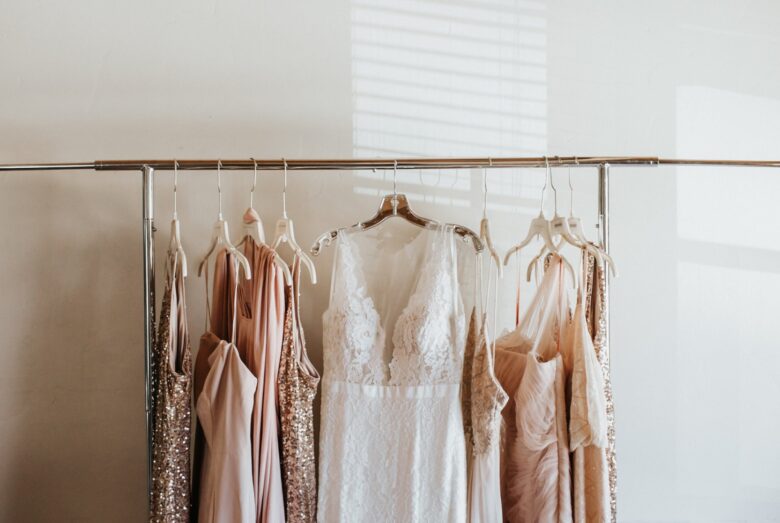
Source: canva.com
Contents
The Fabric of the Dress is Important
Embroidery is a timeless craft that developed in ancient times all over the world and in all cultures. It is a traditional craft that can also be modern and beautiful for every occasion, including wedding dresses. Any fabric type can be embroidered. The choice of fabric type should reflect your style, how the dress will drape, and of course the season.
For fall and winter wedding dresses choose a thicker fabric with more structure. Embroidery looks elegant on velvet or thicker silks, like shantung and mikado. Lace is also ideal for winter and embroidered lace offers another layer of decoration.
For summer, choose something lighter for comfort. A flowy fabric suits many spring and summer wedding themes. Choose chiffon, organza, charmeuse, crepe, or voile.
While all fabrics can be embroidered, matching the fabric to the style and heaviness of the embellishment is important. Heavy, thick embroidery on a light fabric might not look right and could pucker. A light hand on the embroidery also won’t stand out on a heavier material like velvet.
Shop Nashville’s finest wedding dress at Adorn Bridal
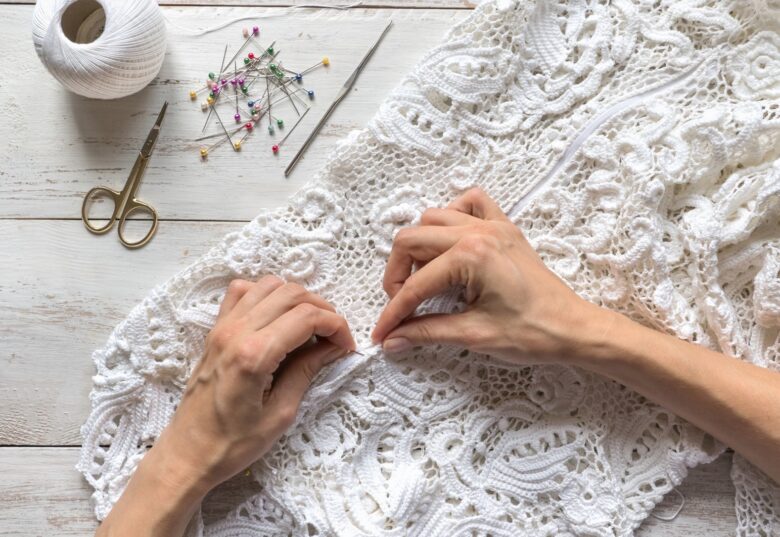
Source: canva.com
The Embroidery Should Be Neat and Even
If you’re purchasing an embroidered gown, quality matters. Expect to pay more for extensive embellishments. A cheaper price likely indicates poor quality with embroidery that is uneven or that unravels easily.
Another option is to purchase a plain dress and add the embroidery yourself. It’s best not to tackle this project on your wedding dress unless you are already an experienced embroidery crafter. Practice your design on pieces of fabric before doing the real work on the dress.
If you are rushed or inexperienced, your embroidery can come out looking sloppy and amateurish. One of the most important factors in making it look professional is creating neat lines. This takes time and patience, especially when creating the curved-line designs, you’ll want on your gown. Here are some tips:
- Use a backstitch. It gives the best results for smooth curved lines.
- Use short stitches for a smoother line.
- Place the start of each new stitch in the hole at the end of the previous one.
- Use the highest quality embroidery floss.
- Give yourself plenty of time to get the embroidery done before the wedding so you don’t feel rushed or get sloppy.
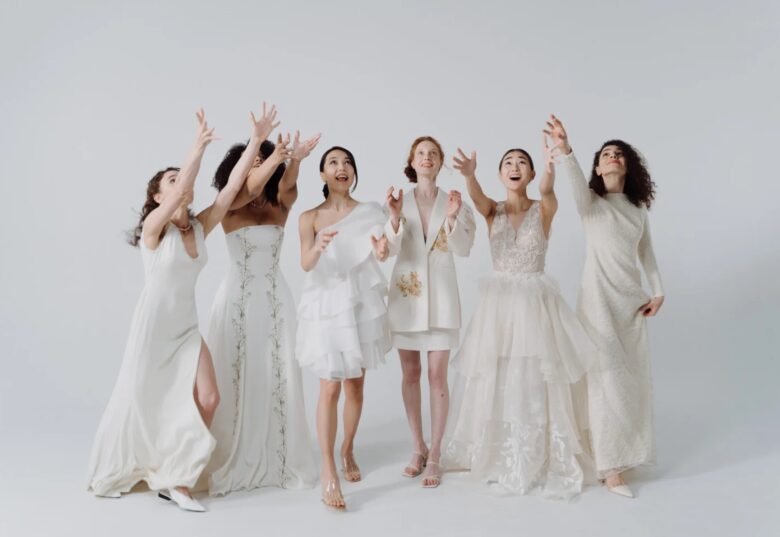
Source: canva.com
Make Sure the Dress Fits Well
Of course, the fit is always important. But when you have a highly embellished dress, any fit issues can be magnified. You’ll also need to be sure the embroidered designs fit on your body and lay right. You don’t want any awkward placements or embroidery that sticks out instead of laying flat.
Wedding dress fittings and alterations take time. With a dress that might have specific fit issues, you need even more time. Plan well in advance. Give yourself at least a year from when you select and purchase the dress to go through multiple rounds of fitting and to get the embroidery right.
If you are adding your own embellishments to a dress, consider consulting with a tailor or seamstress before starting the project. They can provide invaluable advice about where to add details, where to avoid embroidering and the type of embroidery or floss that will work best with your chosen fabric. They will also be better able to fit you for the dress and make alterations if they’ve been part of the creative process from start to finish.
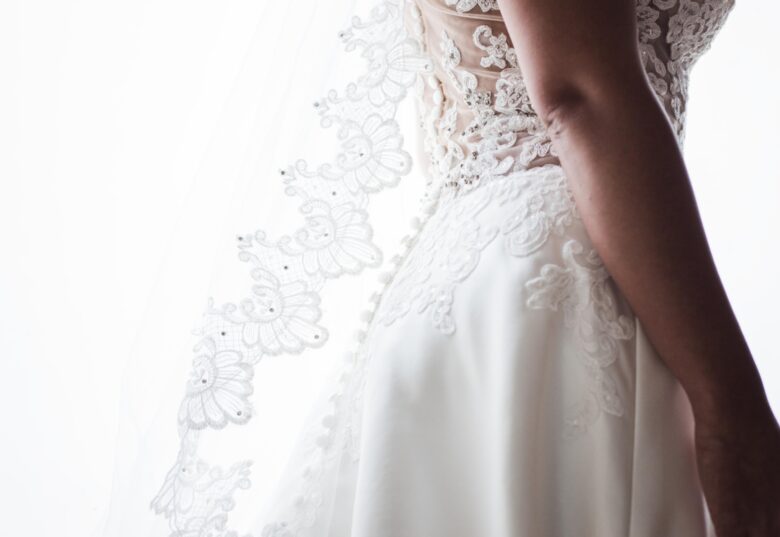
Source: canva.com
Creative Brides Love Embroidery
Embroidered gowns might not be a lasting wedding trend, but it’s big right now and it’s great for creative brides. Embroidery gives you a chance to express your style more completely, and it is suited to all kinds of styles, from boho to traditional to romantic. Plan well in advance, choose your fabric wisely and aim for quality for a successful embroidered wedding dress.
The Different Types of Embroidered Wedding Dresses
There are many different types of embroidered wedding dresses, each with its own unique features and design. Here are four popular types of embroidered wedding dresses:
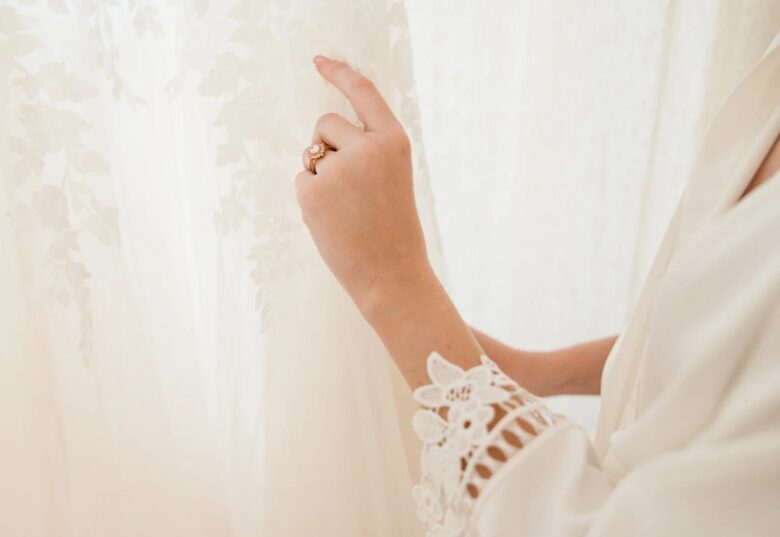
Source: canva.com
1. A-line Embroidered Wedding Dress
A-line embroidered wedding dresses often feature a fitted bodice with a flared skirt. The hem of the skirt is often decorated with intricate embroidery, making this type of dress elegant and glamorous.
2. Ball Gown Embroidered Wedding Dress
Similar to an A-line dress, ball gown embroidered wedding dresses typically feature a fitted bodice with a flared skirt. However, the skirt is often longer and more billowy than in an A-line dress. This style is popular for receptions because it’s easy to dance in and makes for a glamorous appearance on your wedding day.
3. Sheath Embroidered Wedding Dresses
Sheath dresses are similar to ball gowns in that they have a fitted bodice with a flared skirt, but the difference between these two styles is that sheath dresses are lower cut on the waistline and feature long sleeves instead of a full sleeve option. This makes them more versatile and perfect for summer weddings or daytime events.
4. Mermaid Tail Embroidered Wedding Dress
Mermaid tail embroidered wedding dresses are all about incorporating shimmer into your look! These gowns usually have a high neckline and empire waistline and are embellished with lace-up details at the back. They’re perfect for a glamorous and romantic wedding day.
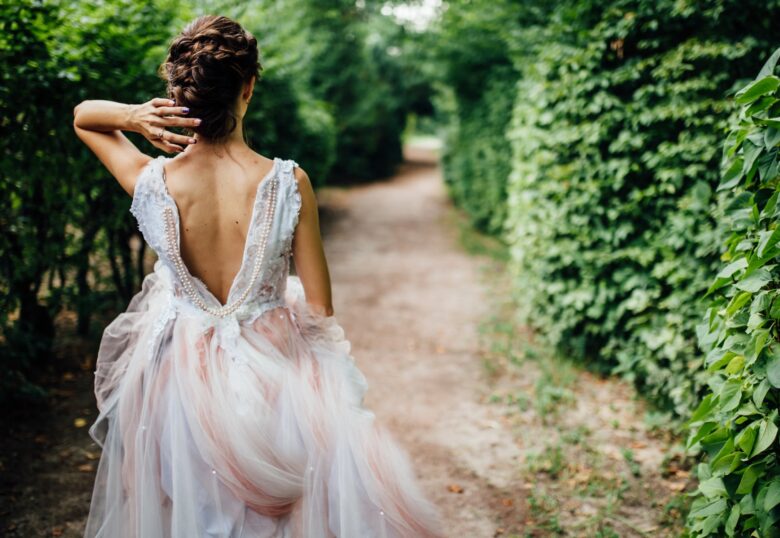
Source: canva.com
Wrapping up
When it comes to choosing an embroidered wedding dress, it’s important to do your research and find the right designer. Once you’ve found one you’re interested in working with, make sure to schedule a consultation so that you can get detailed measurements and discuss your vision for your dream wedding dress.
